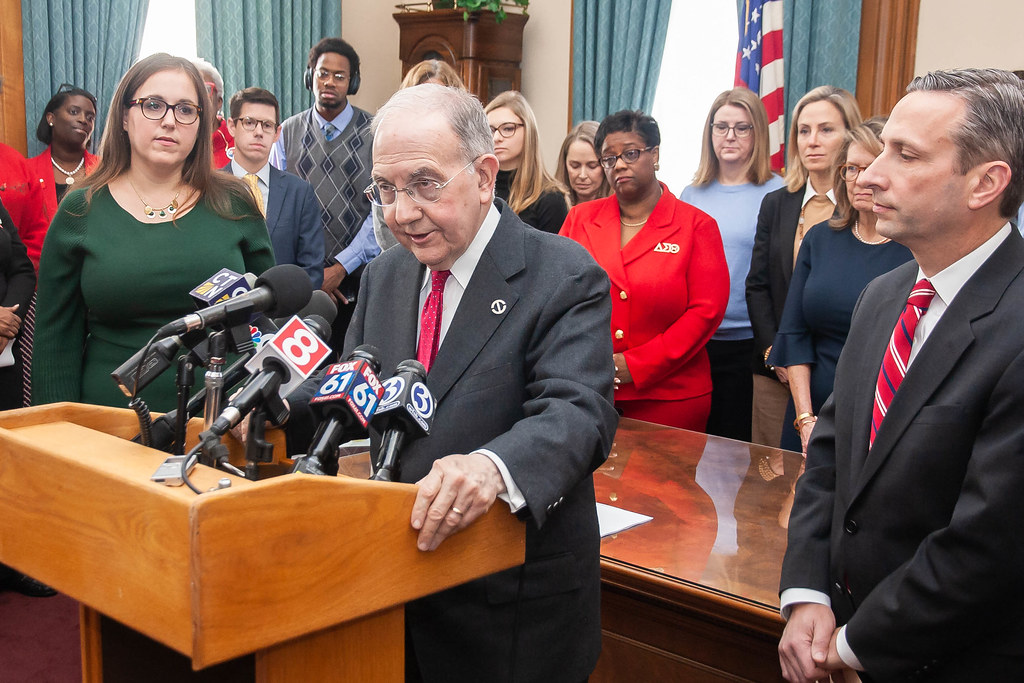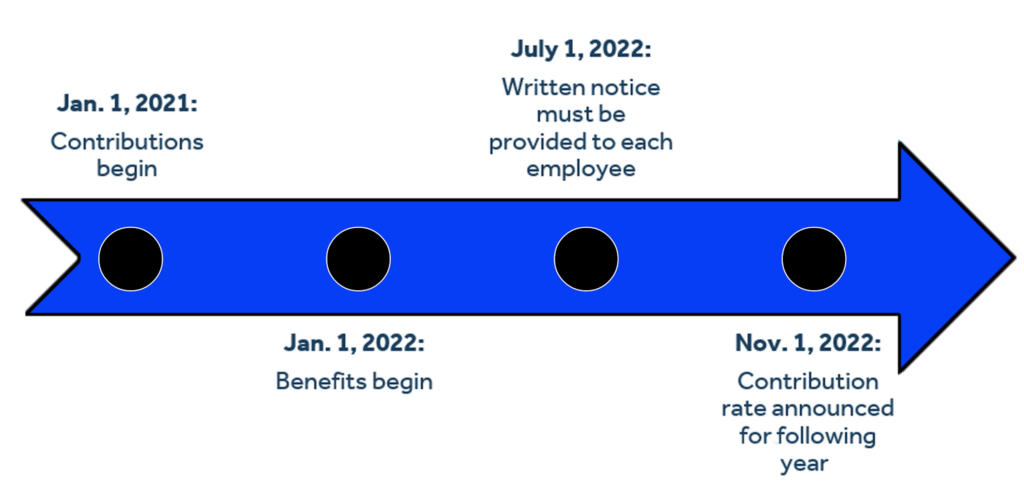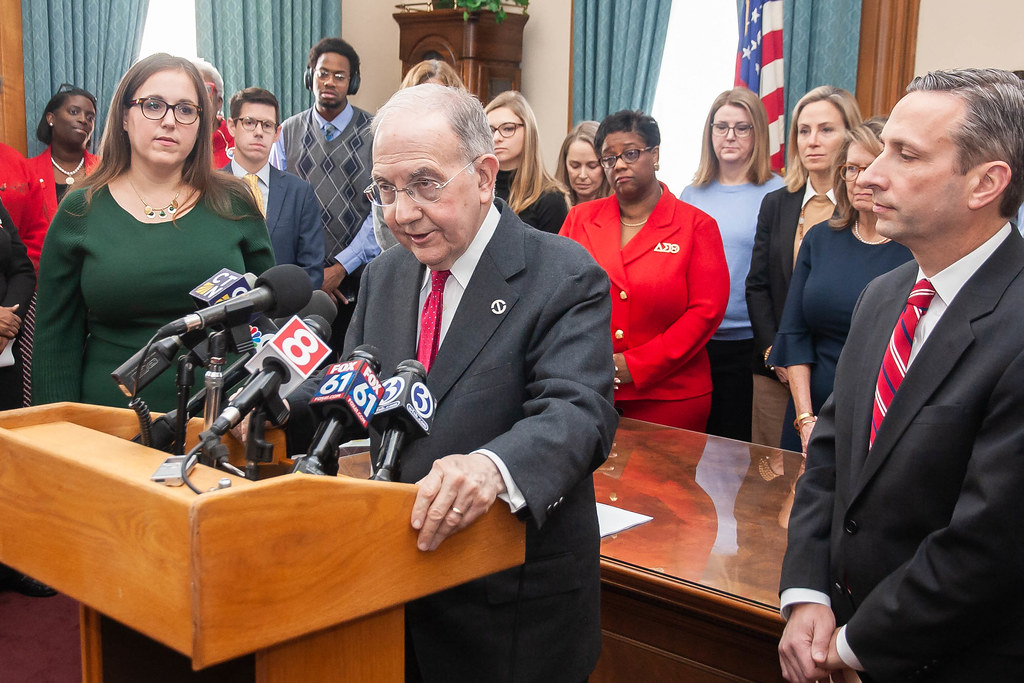Follow for more breaking stories around the community: @Nick_939
Four years ago, a new mother named Ashley was living in New Haven. She was feeling what new parents feel: struggling to balance family and work and risking losing control of both. “I felt torn between staying home with my child and working,” she said. “It seems ridiculous that women continue to be kept from contributing to the U.S. economy because of a forced-choice — to be with their young children and jeopardize their careers or to forgo important time with their children to contribute to needed household income.”
Ashley’s story is all too common for hardworking Americans in Connecticut, and across the country. She stepped forward to tell her story through the organization Moms Rising Together. The reason? Connecticut has 33,000 childbirths each year, leaving 33,000 families to decide how to balance their family and work.
The problem is not exclusive to new parents. When the new year began, over 80,000 Connecticut residents were not working because they were sick or caring for someone with COVID-19. Another 53,400 were not working because of another illness or disability.
This issue was primed to become more of a headache and hardship for Connecticut, where nearly one-third of workers are 55 or older. Over the next two decades, the share of the state’s population over 65 will grow by over one-sixth. Of course, older workers are more likely to experience serious medical conditions.

In 2019, Connecticut’s State Legislature decided to step in to help. Under the program, which was championed by Governor Ned Lamont, workers will gain benefits that allow them to take time off work to care for themselves, a young child, or a family member with an illness. According to the state, eligible workers can receive up to 12 weeks of income replacement.
Connecticut is only the eighth state in America to enact a paid leave program. While it seems to be the norm for developed nations to have some form of paid leave program, the United States of America doesn’t. According to surveys, only 13 percent of private-sector workers in the United States have access to paid family and medical leave. There was a chance for a federal version of the program to be passed into law last year.
Sophia Szew was a legislative intern in the House of Representatives when Democrats made their push to include paid family leave in their Build Back Better Act, before it ultimately died in the Senate. She didn’t hold back when asked about what impact it would have had nationally if signed into law.
“It’s extremely frustrating. Developed nations around the world have it, and several states have implemented it, with Connecticut being one of them,” she said. “Even if you disregard the compassion aspect, the benefits of a federal paid leave program would greatly improve our nation’s economy too.”
Connecticut Democrats were overjoyed when they finally passed their version of the program, with House Speaker Joe Aresimowicz saying, “Today is a great day for Connecticut’s workers. People on all sides of the aisle agree that working people should have the ability to take time to care for loved ones in need. This paid family leave system, which is funded by the employees themselves, helps to ensure that no one has to choose between a paycheck or taking care of a family member who has fallen ill or just had a baby.”
It was immensely popular as a concept and its approval rating hasn’t dipped since implementation. Polling by organizations that support the program shows that as much as 80 percent of the state approves of the idea. However, a lower percentage agreed to a payroll deduction to fund it.

Connecticut Senate Pro Tempore Martin Looney, who represents New Haven, saw it as one of his proudest achievements to solve this seemingly perpetual crisis. “Simply Put? It was a way to recognize that there are people who are in great distress when they have either a personal illness or a family obligation with somebody to take care of. They have to choose between being able to work, which is essential for them, because they have no resources other than their weekly income.”
He paused letting the gravity of the issue hang in the air for a moment before continuing. “So, it just seems that in some cases it means they’re either going to wind up neglecting their family, their own health or putting their jobs in jeopardy. We felt that that’s just not a fair situation for people to be in.”
He made it clear that Governor Ned Lamont wished to join the other states that have adopted the program. “In 2019, it certainly was something the Governor ran a good campaign on. It was an issue that he had said he was in favor of, and we were able to get it passed. Now it’s three years later and people are actually starting to use it.”
Paid Family and Medical Leave benefits became available starting in January of this year. Connecticut’s definition of a family member includes a child, parent, spouse, grandparent, grandchild, individuals who are related by blood or an equivalent of that relationship. The maximum weekly benefit cannot exceed 60 times the minimum wage, currently $14 per hour, according to a press release from the Governor’s office.

Ryan Dowling has been a cashier at the Connecticut Fresh Food & Produce Market for several years and was surprised when he clocked into work in January with a new training to complete. “I was shocked at first. I haven’t had to do a training in several years. But apparently, this new program is being implemented for people who need it. As a result, we had to learn about it.”
Ryan said he found it useful, but for a job and not a career he doesn’t think he would try it. “Don’t get me wrong,” said Dowling. “I think it’s a great idea to give an extra layer of security for people, I just don’t think I will personally be going through the trouble if I was in that position.”
While its recent introduction to the state’s economy has some slow to apply, the ones who have are yet to encounter any significant snags. “Pulling from the fund has been going according to plan,” said Sen. Looney, a smile fixed on his face. “There’s really been no issues yet.”
So far, the state’s paid Family and Medical Leave program has attracted over 14,000 applicants in its first two months. As the program increases in popularity and usage, it will be important for state officials to watch the funds. “One of the questions that came up earlier, is if taking half a percent is going to be enough to cover the number of potential claims.”
The last thing you want to do is come back and raise the percentage that’s taken,” said Sen. Looney. “Fortunately, there are no solvency concerns. It’s something that’s amazing so far. We think that we can get away with that and finally solve this issue.”
The large cities of New Haven (650 cases), Hartford (579), Waterbury (564) and Bridgeport (540), lead the pack, followed by Bristol (540), Meriden (396) and Hamden (364).
Nancy, a citizen of Wallingford has benefitted from the program firsthand. “While I was a public teacher, my late husband’s diabetes caused catastrophic health issues. Anything diabetes can do to a person, it did to him,” she said.
“If I did not have access to FMLA, I still fear what the stresses could have done to me.I believe FMLA saved my own life,” Nancy said. “Paid Family Leave can only help, not hurt, an employer and an employee. I am certain it is a literal life saver. Thank you.”
The popularity of the program could very well propel the Governor to a comfortable re-election later this year, in a midterm cycle expected to be rough for Democrats across the country. Whether Congress passes a federal paid leave program or not, other states are sure to follow suit in implementing their own versions. Assuming the smooth sailing continues, it seems Connecticut might have set a blueprint for the nation.

